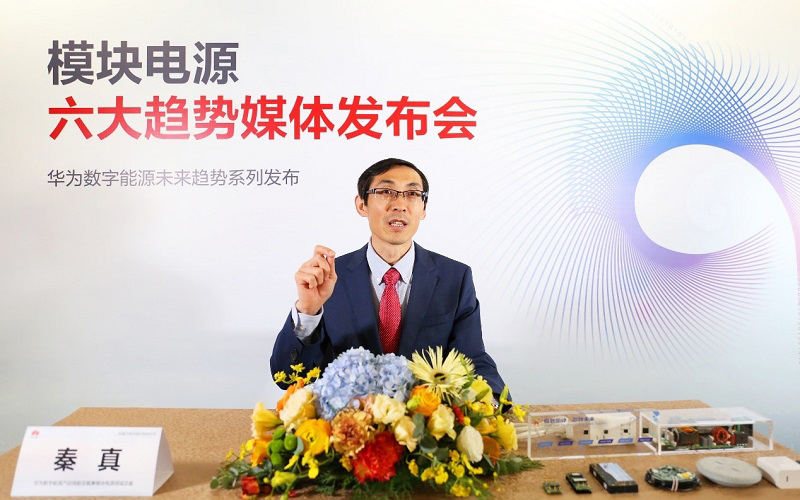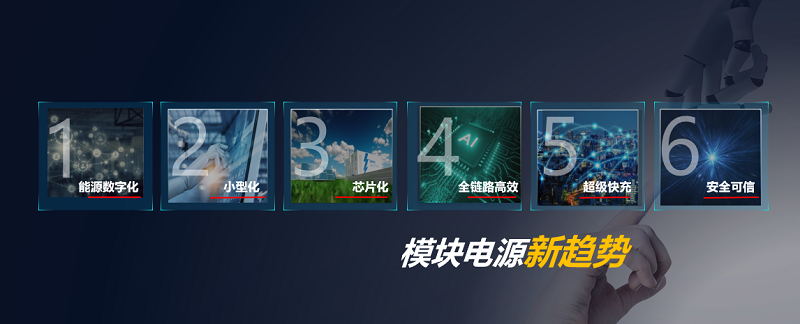[Shenzhen, China, January 22, 2021] Huawei Digital Power Product Line sets new trends in modular power.
Driven by new infrastructure construction, various industries are embarking on digital transformation, smart upgrade, and convergence for innovation. A fully connected world with "pervasive connectivity and ubiquitous intelligence" is emerging. People are enjoying ultimate experiences brought to life by intelligence.
In the context of new infrastructure construction, the greatest challenge for digital transformation lies in tackling power consumption. Analysis data shows that by 2025 the number of telecom sites is expected to increase to 70 million with power consumption of over 670 billion kWh each year; data center racks will increase to 24 million with the annual power consumption exceeding 950 billion kWh. In pan-industrial scenarios, the annual power consumption of rail transport and industrial manufacturing will exceed 16 trillion kWh. An expected 40 billion smart devices with power consumption of 210 billion kWh each year will be driven by social media and digital life.
Energy conservation and emission reduction have become the common goal of all mankind. China has promised to reach carbon peak by 2030 and carbon neutrality by 2060, while Japan and South Korea have also proposed to be carbon neutral by 2050. The global energy revolution will drive all industries, including the industrial, IT, communications, and consumer sectors, shifting the focus to green power generation and efficient power usage.
Huawei Modular Power sets new trends against these backgrounds. In the spirit of openness and collaboration, Huawei Digital Power has made its incredible power supply units (PSUs) available to partners for the first time and has allowed Huawei PSUs to be integrated in non-Huawei products. Huawei Digital Power will focus on pan-CT, pan-IT, pan-industrial, and consumer electronics sectors and continuously invest in technologies to develop high-density, efficient, and reliable digital modular power solutions. By doing so, it plans to boost global partner development, facilitate industry upgrade, and build ultimate charging experience.
 Qin Zhen, Vice President of Huawei Digital Power Product Line and President of Modular Power
Qin Zhen, Vice President of Huawei Digital Power Product Line and President of Modular Power
[New Trends in Modular Power]
Qin Zhen, Vice President of Huawei Digital Power Product Line and President of Modular Power, pointed out that modular power will evolve in six areas: digitalization, miniaturization, IC packaging, full-link efficiency, SuperCharge, and security and trustworthiness.
 Six modular power trends
Six modular power trends
Digitalization: Digitalized, visible, manageable, optimized, and predictable service life of power components
Traditional power components will be gradually digitized and intelligent management will become available at the component, equipment, and network levels. For example, with cloud management of server PSUs, the data and device status can be viewed and controlled remotely, and the energy efficiency can be intelligently optimized by AI. This will result in a significant improvement in the reliability of the entire power supply system.
Miniaturization: Smaller PSUs obtained through high frequency, magnetic integration, packaging, and modularization
As network devices become popular, power consumption and computing power will continue to increase, and high-density and miniaturized PSUs are inevitable. The high-frequency, magnetic integration, packaging, and modular technologies are advancing, which will also accelerate the development of smaller PSUs.
IC packaging: Chip-based PSUs adopting semiconductor packaging technologies, achieving high reliability and simplified applications
Board mounted powers (BMP) have gradually evolved from the PCBA to the molded form. Based on the semiconductor packaging technology and high-frequency magnetic integration technology, traditional PSUs consisting of only hardware will evolve to software-hardware coupling. That is, PSUs will adopt IC packaging to increase the power density by about 2.3 times, improve the reliability and environment adaptability, and intelligently upgrade devices.
All-link efficiency: Reshaping the power supply architecture and leveraging new technologies to achieve ultra-high efficiency at all levels
A full link consists of power generation and power consumption. The component efficiency is constantly improving, and the BMP adopting IC packaging is pushing component efficiency to the limit. Optimizing the power supply architecture is a new direction for improving the full-link efficiency. For example, the digital PSUs can be combined flexibly to intelligently meet the load requirements. PSUs for servers adopt dual inputs instead of the traditional single input, which not only improves the optimal efficiency of a single PSU, but also enables flexible matching of all PSUs to supply power efficiently. In addition, most vendors focus only on the efficiency of the primary power supply (AC/DC) and secondary power supply (DC/DC), neglecting the efficiency of the downstream BMP. While maintaining the AC/DC and DC/DC efficiency, Huawei uses advanced silicon carbide (SiC) and gallium nitride (GaN) materials, and customizes IC, packaging, topology, and component strong coupling design based on a digital model to further improve BMP efficiency, thereby developing a highly efficient full-link power supply solution.
SuperCharge: Ubiquitous SuperCharge reshapes the charging experience
Mobile phones, tablets, laptops, and other smart devices are extensively used for conferences, live broadcast, shopping, videos, and mobile games. Diversified applications lead to a surge in power consumption. However, this has also led to users having charging anxiety when it comes to the battery life of smart devices. SuperCharge anytime, anywhere is urgently needed. Huawei pioneered the concept of "2+N+X", which integrates wired and wireless fast charging technologies into N products (such as power strips, wall outlets, desk lamps, coffee machines, and treadmills) in X scenarios (including home, hotel, office, and vehicle). In the future, users can enjoy fast charging without carrying their charger or power bank with them while traveling, thanks to the prevalent SuperCharge.
Security and trustworthiness: Reliable hardware and secure software
While the hardware reliability continues to improve, there are potential cyber security threats in the digitalization and cloud-based management of power components. The new challenges posed by the software security of PSUs define requirements for system resilience, security, privacy, reliability, and availability. Power products are generally not the target, but attacks on power products can further damage the entire system. Huawei ensures that the hardware and software of each product are secure and reliable to shield customers' products or systems from damage.
Huawei Digital Power has been working in the energy field for years, focusing on smart PV, data center facility, site power, vehicle-mounted power, and modular power. In the future, Huawei Modular Power will continue to establish itself in power electronics technologies, integrate technologies in multiple domains, and increase investment in materials, packaging, process, topology, heat dissipation, and algorithm coupling. By building high-density, efficient, reliable, and digital power supply solutions, Huawei will work with partners to advance industry transformation and provide the ultimate experience for consumers.

 Search
Search




 Search
Search


